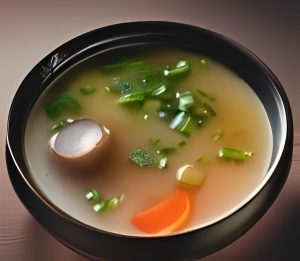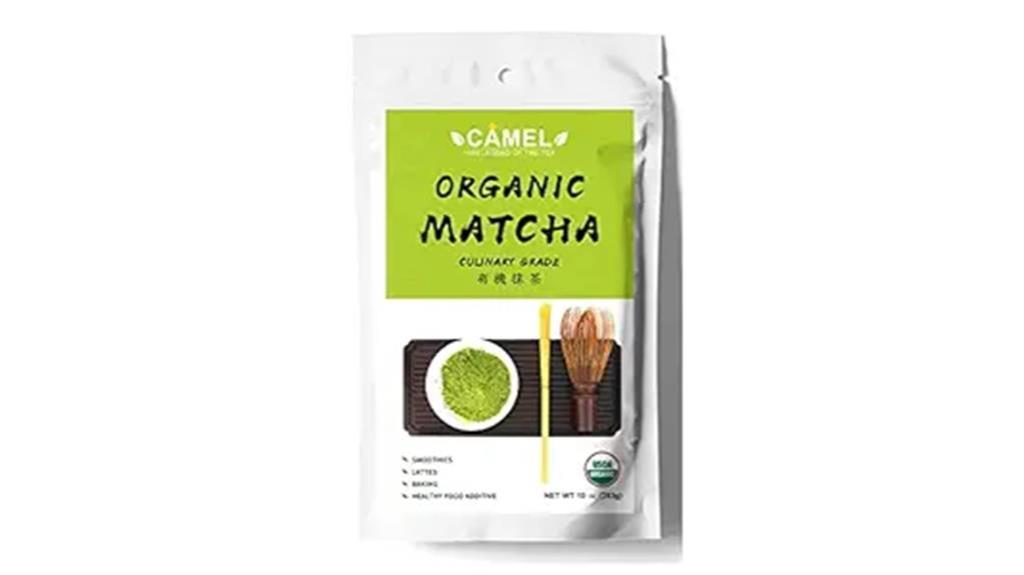Are you wondering if miso soup is gluten-free? Look no further! In this article, we’ll provide you with all the information you need to know about the gluten content in miso soup.
We’ll explain what miso soup is and help you understand gluten and its sensitivity. You’ll also learn about the ingredients used in making miso soup and whether or not gluten is present.
Stay tuned for tips on avoiding cross-contamination and discover some delicious gluten-free alternatives to enjoy instead.
Key Takeaways
- Miso soup is traditionally made from fermented soybeans, but some miso pastes may contain gluten from ingredients like rice or barley.
- It is important to check the label or inquire about the specific brand of miso paste used to ensure it is gluten-free.
- Cross-contamination risks in miso soup include shared cooking equipment, condiments, cutting boards, utensils, and work surfaces.
- Those with celiac disease or non-celiac gluten sensitivity should consider gluten-free alternatives like chickpea miso.
What Is Miso Soup

Miso soup is a traditional Japanese soup made from fermented soybeans. It’s typically gluten-free and has been a staple in Japanese cuisine for centuries. Miso soup is enjoyed for its unique flavor and numerous health benefits.
Miso soup recipes vary, but the basic ingredients include miso paste, dashi (a Japanese stock), tofu, seaweed, and scallions. The fermentation process gives miso its distinct umami taste while also enhancing its nutritional value.
One of the key health benefits of miso soup lies in its probiotic properties. Fermented foods like miso are rich in beneficial bacteria that promote gut health and support digestion. Miso also contains essential amino acids, vitamins B12 and K2, as well as minerals such as copper and manganese. These nutrients contribute to overall immune system support, bone health, and energy production.
In addition to being gluten-free, miso soup can easily be customized to suit various dietary needs by adding vegetables or proteins like shrimp or chicken. Its versatility makes it a great option for those looking for a nutritious yet flavorful meal option.
Understanding Gluten and Gluten Sensitivity

There’s a lot of confusion about gluten and its impact on people with sensitivities. Understanding the basics can help clear things up. Here are some important points to consider:
- Gluten is a protein found in wheat, barley, and rye.
- People with celiac disease have an autoimmune reaction to gluten, causing damage to the small intestine.
- Non-celiac gluten sensitivity (NCGS) refers to those who experience symptoms after consuming gluten but do not have celiac disease.
- Symptoms of gluten sensitivity may include bloating, abdominal pain, diarrhea or constipation, fatigue, and headaches.
- Following a strict gluten-free diet is crucial for individuals with celiac disease or NCGS.
It’s important to consult with a healthcare professional if you suspect you have a gluten sensitivity. They can help diagnose your condition and guide you toward making dietary changes that will support your health and well-being.
Ingredients in Miso Soup: Is Gluten Present

If you’re unsure about the ingredients in your soup, it’s important to read the label carefully and look out for any potential sources of gluten.
When it comes to miso soup, the main ingredient is miso paste, which is traditionally made from fermented soybeans, rice, or barley. While soybeans are naturally gluten-free, rice and barley can contain gluten. Therefore, it’s crucial to check the label or inquire about the specific brand you are using.
People with celiac disease must avoid gluten entirely, as even small amounts can cause damage to their intestines. However, there are gluten-free miso paste options available on the market that use only gluten-free ingredients.
Cross-Contamination and Miso Soup

When checking the label for potential gluten sources, it’s important to be mindful of cross-contamination in miso soup. Cross-contamination occurs when a gluten-free food comes into contact with a surface or utensil that has been contaminated with gluten.
Here are some key cross-contamination risks to consider when preparing or ordering miso soup:
- Shared cooking equipment: Ensure that the pots, pans, and utensils used to make miso soup have not been used for dishes containing gluten.
- Condiments: Be cautious about using shared condiments like soy sauce, as they may contain wheat and can contaminate your miso soup.
- Cutting boards and knives: Avoid using cutting boards and knives that have been used to prepare foods with gluten.
- Serving utensils: Use separate serving utensils for gluten-free options to prevent contamination.
- Work surfaces: Clean work surfaces thoroughly before preparing gluten-free miso recipes.
Gluten-Free Alternatives to Miso Soup

To enjoy a safe and tasty alternative, try using chickpea miso in your recipes. Chickpea miso is a gluten-free option that provides all the flavor and health benefits of traditional miso soup without the worry of cross-contamination.
Miso soup is known for its rich umami flavor and nutritional value. It contains essential amino acids, vitamins, and minerals that can support digestion, boost immunity, and promote overall well-being. By using chickpea miso in your gluten-free recipes, you can still enjoy the delicious taste of miso soup while ensuring it fits into your dietary needs.
Whether you’re making soups, dressings, or marinades, chickpea miso adds a savory depth to any dish.
Conclusion
So, is miso soup gluten-free?
The answer is yes! Miso itself, which is made from fermented soybeans and grains like rice or barley, does not contain gluten.
However, it’s important to be mindful of cross-contamination if you have severe gluten sensitivity or celiac disease. Some brands may also add gluten-containing ingredients, so always read the label carefully.
If you’re looking for a gluten-free alternative to miso soup, there are options available using alternative grains like quinoa or buckwheat.
Enjoy your delicious and gluten-free miso soup!
 Miko Brand Miso Soup
Miko Brand Miso Soup Miko brand miso soup is your ticket to convenience without compromising on flavor.
These instant miso soup packets offer a hassle-free way to savor traditional Japanese miso soup at any time.
While they may not have the widest variety of options, Miko focuses on simplicity and quality, with choices that include classic miso or those with added ingredients like tofu and green onions.
- Convenient and straightforward preparation for busy lifestyles
- Authentic miso paste for a genuine taste experience
- A selection of flavors and ingredients, adding variety to your miso soup moments
- Limited variety compared to some other brands, which may not suit those seeking more unique flavors








Konnichiwa! (Hello!) I'm Pat Tokuyama, a Japanese tofu cookbook author, who travels for music, food, and adventure. If you like Japanese tea, checkout some of the newestorganic japanese tea, matcha bowls and noren and more!
** Curious about the Plant Based Japanese Cooking Club? ** Learn more here!